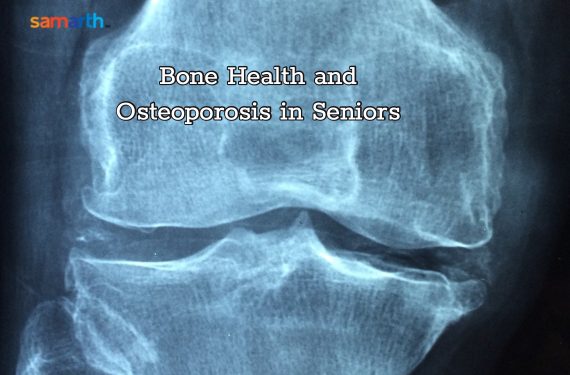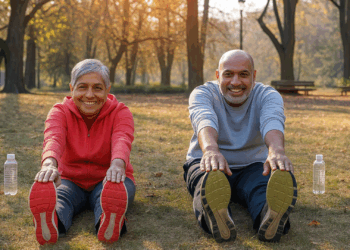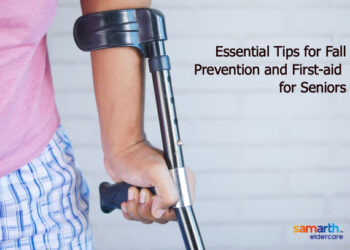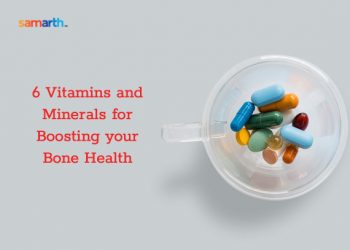Bone health is one of the major concerns of growing old, as it is a given that bones undergo some wear and tear. At times, they weaken and people become more prone to fractures. Fractures also take time to heal when you are above 60 years. Mobility is of utmost importance in old age as otherwise being dependent on others becomes a major issue. Thus, bone health is something that must be taken seriously by people of all ages, especially senior citizens.
Typically, the main issues that come up with bone health post 6 years are arthritis/osteoarthritis, osteoporosis, osteomalacia (bone softening, mainly due to Vitamin D issues), rheumatoid arthritis, and the usual aches and pains. Age-related changes in joints can cause some major issues like having to undergo knee-replacement surgeries, etc. Most often, people are advised to take supplements of Calcium and Vitamin D to prevent issues and protect the bones from further degrading. Also, some other measures help us take care of our bone health to ensure a fully mobile life.
Osteoporosis

Join Now >
Clinically, osteoporosis is a bone health condition wherein the bones become brittle and weak. In this condition, they become more prone to fractures and also take time to heal once broken.
There aren’t any comprehensive large-scale studies done among the Indian population on this topic. However, some estimates suggested that 20% of Indian women over age 50 have osteoporosis. In a few studies across age groups, this number goes up as high as 62%. This bone health issue is more prevalent among women, especially, post-menopausal women. The osteoporosis prevalence in males older than 50 years ranges between 8.5 to 24.6%. Hip, spine, and wrist fractures are a common result of osteoporosis seen in people of this age.
Symptoms and Risk Factors
Age, gender, genetics, and ethnicity are the risk factors for developing osteoporosis. Asian postmenopausal women are therefore at a greater risk of developing this condition according to the statistical data available publicly. This is mainly said to be due to the smaller frame of women, not having adequate Calcium-rich foods in the growing up years, and lack of exposure to sunlight. Also, after menopause women develop oestrogen deficiency that contributes to this condition. Indian women are also said to have a lower bone mineral density (BMD) as compared to their Western counterparts.
In these, eating Calcium and nutrition-rich foods and avoiding Vitamin D deficiency are the modifiable risk factors. Avoiding a sedentary lifestyle with regular exercise also helps keep the bones and muscles healthy and improves the BMD. Hormone levels and thyroid issues can also lead to osteoporosis. Some medical conditions like cancer, inflammatory bowel disease, multiple myeloma also become risk factors contributing to osteoporosis. Certain long-term medications like steroids also may cause this condition.
Typical symptoms include back pain, stooped posture, reduced height, easy falls, fractures, etc. It is usually diagnosed after a DEXA (dual-energy x-ray absorptiometry) scan that determines your BMD. This scan also assesses your risk of fracture and need for treatment.
Prevention and Treatment
The modifiable risk factors are mentioned above as ensuring nutrition, especially Calcium-rich food and Vitamin D exposure. Diet plays a major role and hence it should be given due attention. Regular exercise is another way to keep osteoporosis at bay. Simple exercises daily in consultation with your doctors can go a long way in keeping fit. Smoking and alcohol consumption too can contribute to the condition and should be avoided.
Treatment includes intake of supplements as prescribed by the doctor. If you are found to be at high risk of fracture, adequate care should be taken while moving around. Also, understand the risk factors, and ensure that you visit a doctor to get a DEXA scan done once a year, especially if you are post-menopausal. A periodic tracking can help you lead a fully mobile life by avoiding osteoporosis or containing it. Depending on the severity, the treatment may also include some bone and muscle strengthening exercises. At times, treatment may also include some form of hormone therapy as well.










